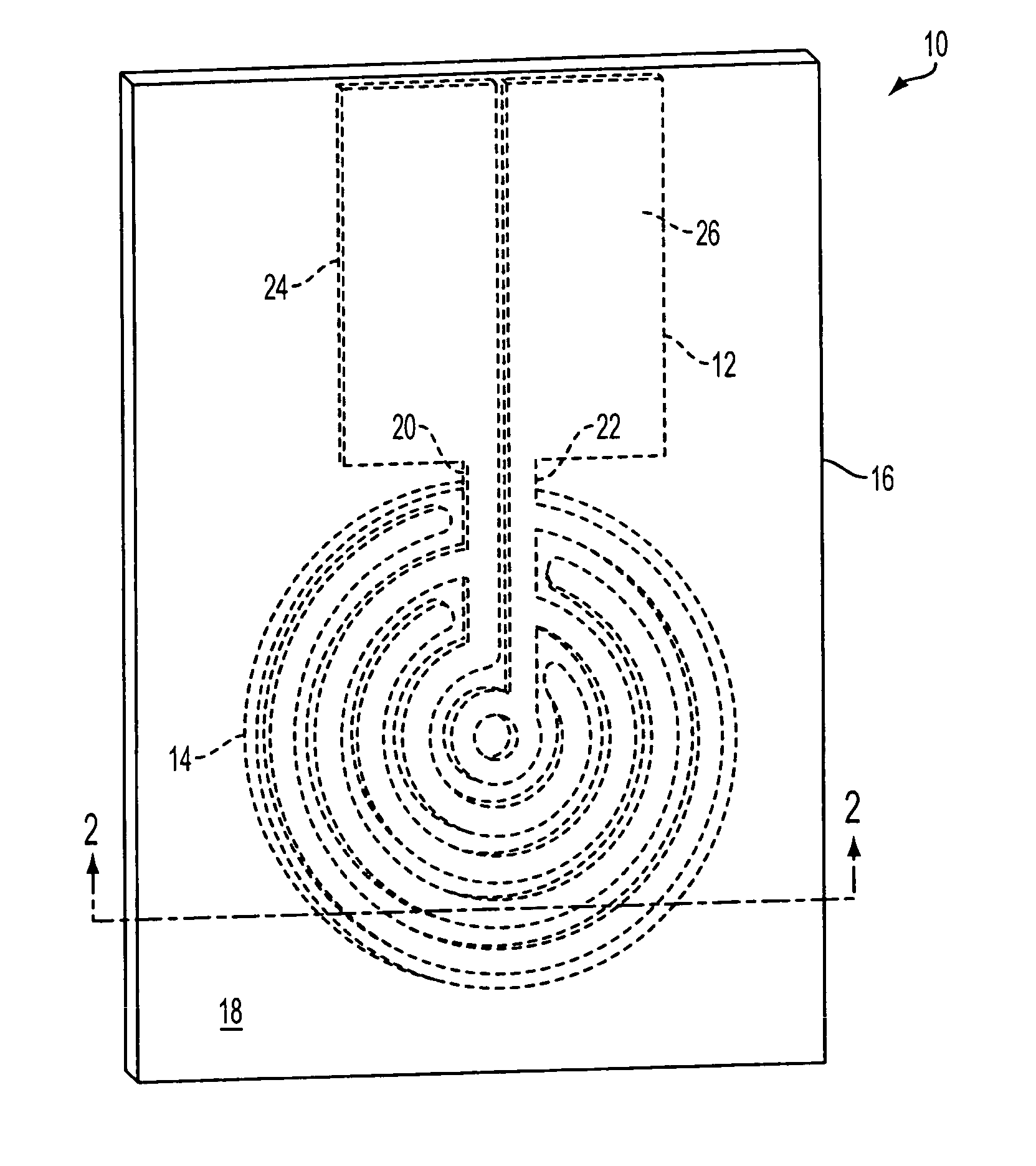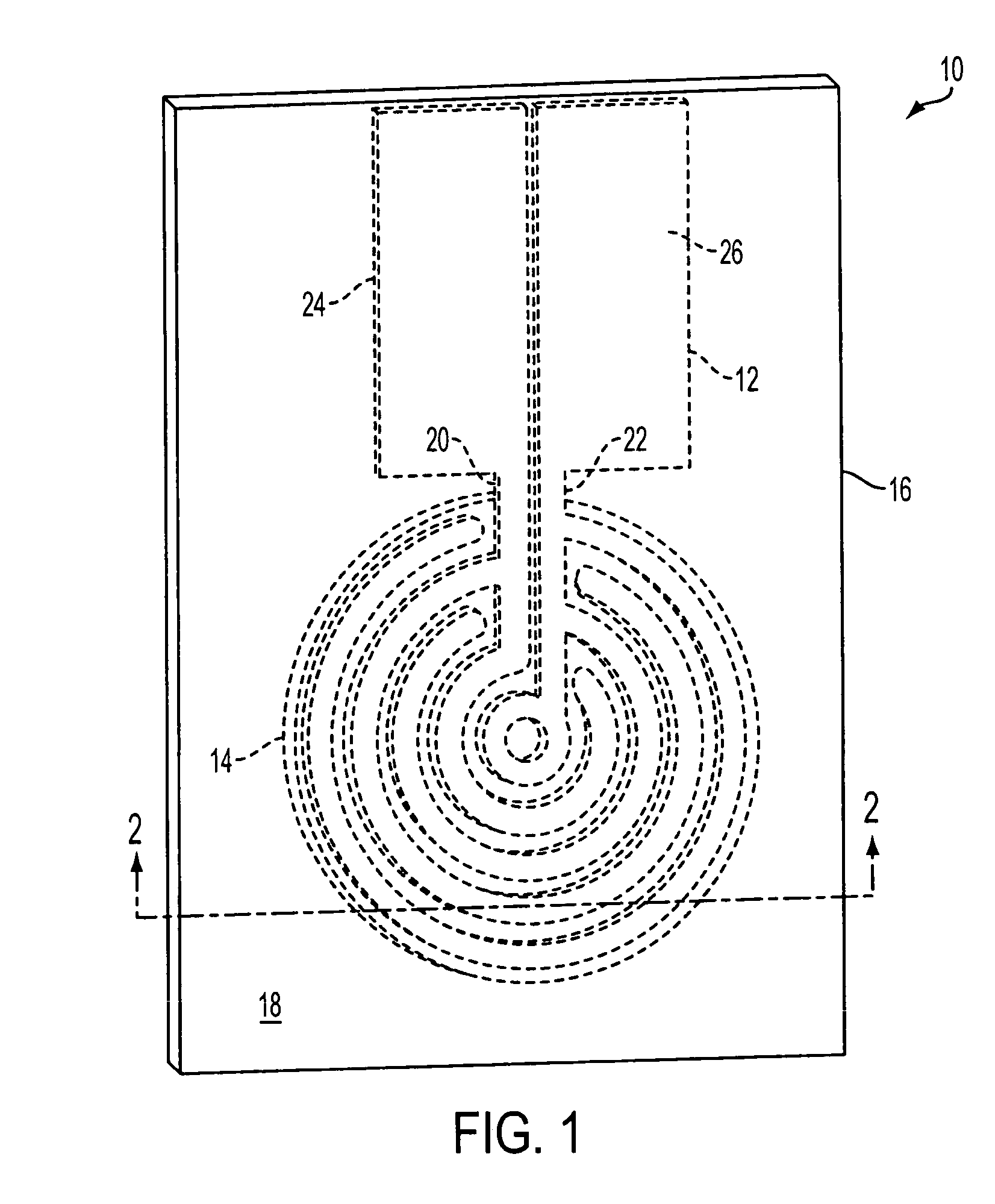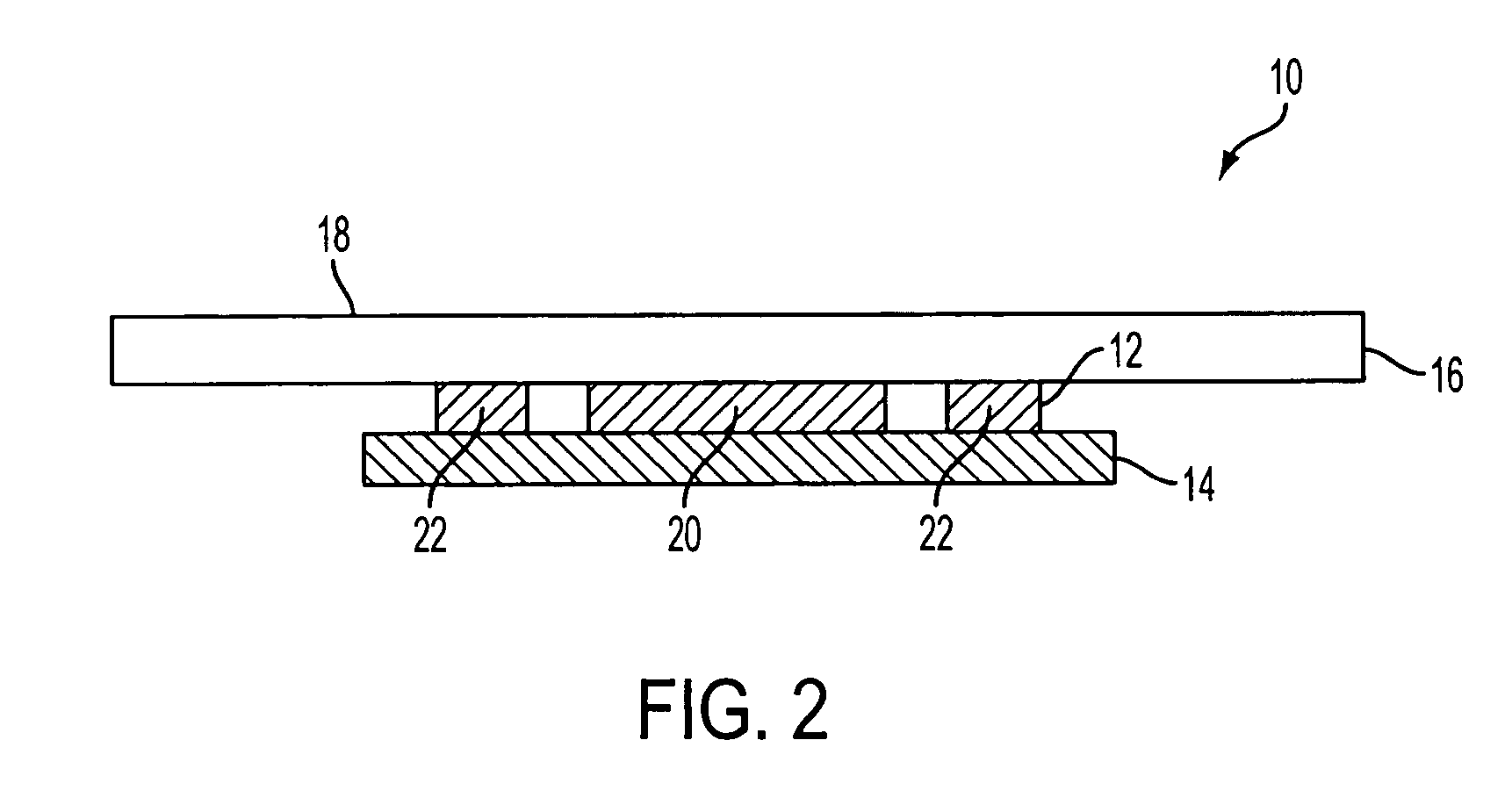Apparatus and method for heating microfluidic volumes and moving fluids
a microfluidic and fluid heating technology, applied in lighting, heating apparatus, laboratory glassware, etc., can solve the problems of film, high cost, and exposure accumulation of replicated nucleic acid products
- Summary
- Abstract
- Description
- Claims
- Application Information
AI Technical Summary
Benefits of technology
Problems solved by technology
Method used
Image
Examples
Embodiment Construction
[0026]This application claims priority to U.S. Provisional Application Ser. No. 60 / 433,209, entitled “Method for heating microfluidic circuits and moving fluids”, filed on Jan. 27, 2003, which is incorporated herein by reference in its entirety.
[0027]A diagram of a device 10 according to the invention is shown in FIGS. 1 and 2. The device 10 of the invention comprises a conductive layer 12, a resistive layer 14 and a substrate 16. Typically, the conductive layer 12 which comprises a conductive material is formed on the substrate 16 and the resistive layer 14 which comprises a resistive material is formed on the conductive layer 12 as shown in FIGS. 1 and 2. Alternatively, the resistive layer 14 is formed on the substrate 16 with the conductive layer 12 formed on the resistive layer 14. In one variation, a second conductive layer and a second resistive layer is printed on the second side 18 of the substrate 16.
[0028]The substrate layer 16 is generally electrically non-conducting and ...
PUM
 Login to View More
Login to View More Abstract
Description
Claims
Application Information
 Login to View More
Login to View More - R&D
- Intellectual Property
- Life Sciences
- Materials
- Tech Scout
- Unparalleled Data Quality
- Higher Quality Content
- 60% Fewer Hallucinations
Browse by: Latest US Patents, China's latest patents, Technical Efficacy Thesaurus, Application Domain, Technology Topic, Popular Technical Reports.
© 2025 PatSnap. All rights reserved.Legal|Privacy policy|Modern Slavery Act Transparency Statement|Sitemap|About US| Contact US: help@patsnap.com



